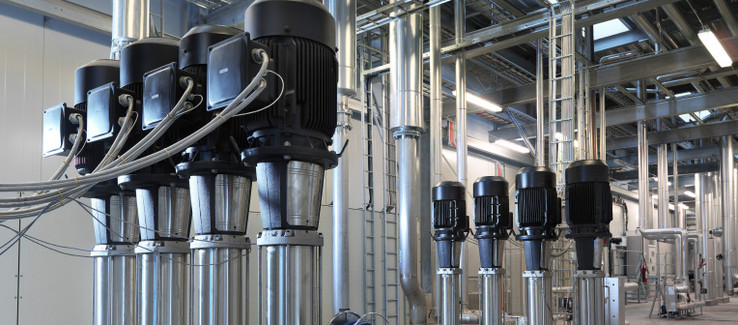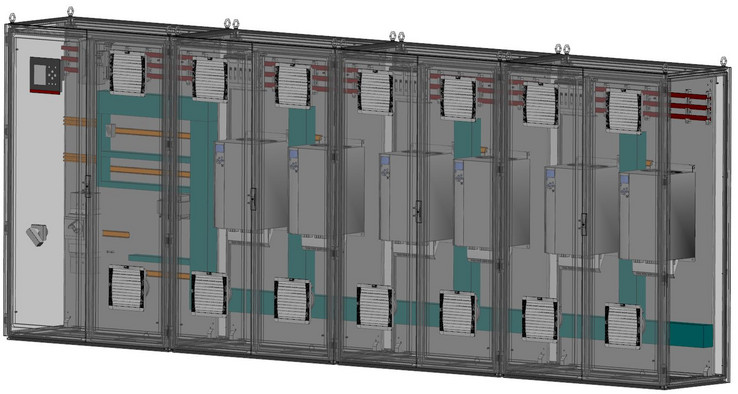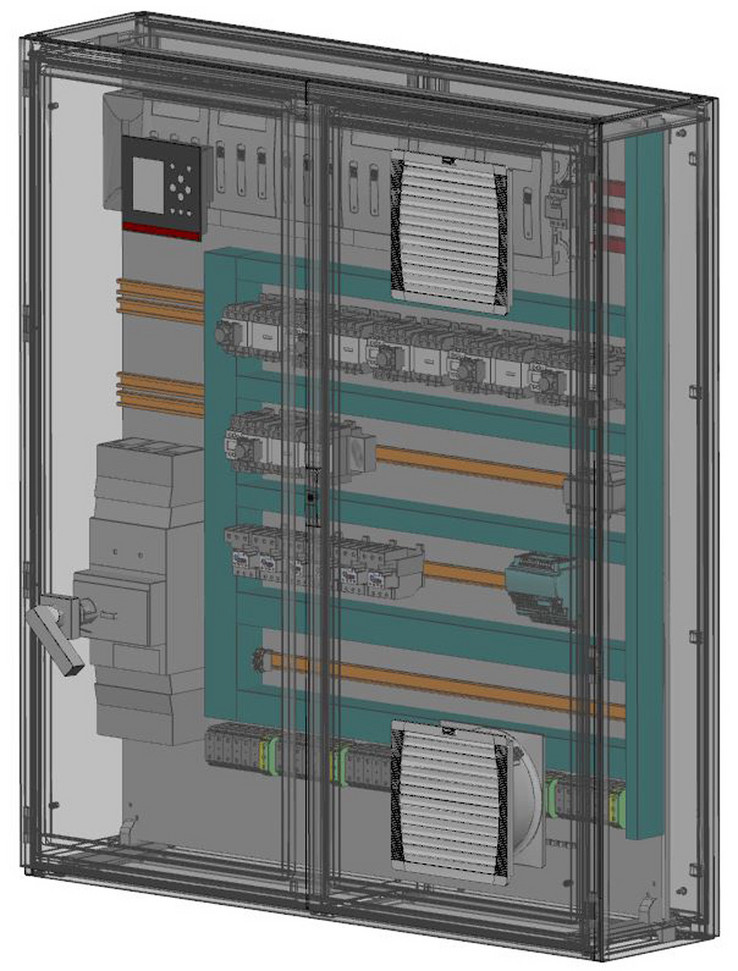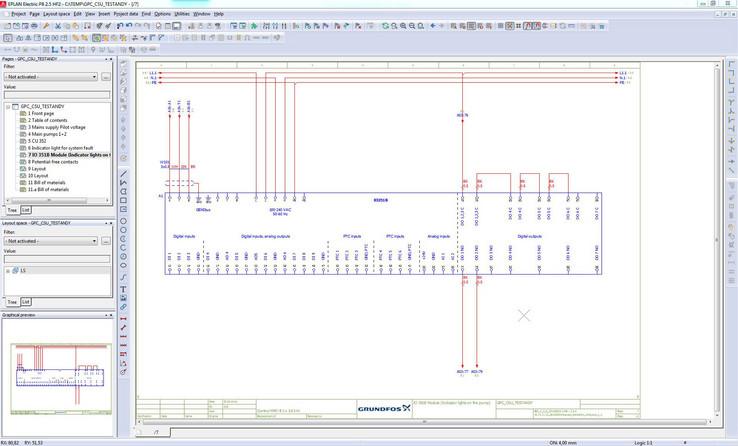Electrical design – with ERP integration
EPLAN Engineering Configuration in use at Grundfos
Grundfos is among the world's top three major manufacturers of pumps. It produces, for example, pressure boosting systems for drinking water supplies, products which have extensive but finite variations. Electrical design takes place at the click of a button: designers enter the required pump capacity, a country standard, technical data and options – all documentation is then automatically generated using EEC. This involves not only the electrical and mechanical drawings but also production data and their integration to the ERP system into a stream of consistent data – in 27 different languages.
Around 600 million people worldwide are being supplied with drinking water from Grundfos pumps. The Danish company employs 19,500 staff, has a global presence, and produces 16 million pumps per year and is therefore one of the major providers in the international market for pumps and systems. Supplying drinking water is just one of the areas in which Grundfos has a strong market position.
Pressure boosting systems for the global market
A typical product here is the Grundfos Hydro MPC, which is made of 2 to 6 pumps and a control panel. Its intelligent cascade control ensures that the optimum number of pumps required to meet the demands runs at any time. As well as delivering the required capacity, boosters must also maintain a constant level of pressure within the domestic drinking water system – irrespective of fluctuating usage and pressure-levels within the network.
Grundfos offers a 7-digit number of Hydro Boosters in a multitude of variations. Users may choose between a range of different capacity classes and a diversity of options. These include variable-speed drives and isolator switches as well as accessories such as operational indicator lights and alarm management systems. Directives and standards for specific countries (EU, UL…) and communication interfaces also need to be considered.
EEC based configurator: automated generation of engineering documents
The combination of type and number of pumps, standards, and options results in a large but finite number of variations of booster systems. This involves variant management, a task that Grundfos has now solved in a new and radical approach. Together with EPLAN, the company has developed a configuration system based on EPLAN Engineering Configuration (EEC), which has substantially simplified the task. Working closely with consultants from EPLAN, a global rollout for implementing EEC within the Grundfos organisation is now being coordinated.
Electrical engineers designing control panels tailored to specific booster systems will in future work in a platform that does not even resemble a CAD system. Individual variants are simply selected using a web based menu system beginning with the required country standard and then the number of pumps and their individual capacities. Options are grouped according to function such as safety and communication and are selected by clicking, too. A total of 27 different languages are available.
Mechanical design
The outcome: designers use project data provided by sales to configure the system while all the necessary electrical engineering documentation – including schematics, bills of material and classification data – is being created in the background. Data for control panel production and cable assembly is also generated and is accessible for the relevant systems, e.g. for automatic metal forming (drilling, milling …) of the required cabinet.
It sounds simple and it is simple. The background processes are however highly complex, as Bjarne Lønvig, Senior Technical Lead explains: “When a designer selects an Ammeter in the configuration system, it needs to be included not only in the schematic but also in the control cabinet's mechanical design because a cut-out needs to be made in the door for the component. This could lead to a change in cabinet size.”
Close integration – detailed preparatory work
EPLAN Engineering Configuration provides the technical basis for integration. This mechatronic configuration system interacts with the EPLAN Platform and the participating authoring systems EPLAN Electric P8 (electrical design) and EPLAN Pro Panel (3D control cabinet layout). EEC contains functional "modules" for the system being designed. These modules can then be selected and automatically integrated as part of a mechatronic design. This applies to both the mechanical as well as the electrical engineering aspects of the design. EPLAN schematics and 3D control cabinet data is output as well as a neutral PDF format. To achieve this high level of simplicity, a set of rules on the functioning of each of the Grundfos product ranges is established within EEC as mechatronic modules. Bjarne Lønvig: “There are more than 750 standard control panel configurations which need to be in place. For this we have defined more than 150 macros and 25 options. The programming of the high variance of combinations required was a particular challenge”.
However, in-house support was at hand. Alexander Grenda, Senior Configuration Engineer at the Grundfos site in Wahlstedt: "We already utilized an own developed configuration system for more than 20 years, which was to be replaced with a new state of the art configurator. The new system has been designed with the aim of creating a link to the ERP to create a truly consistent stream of data."
Innovation: E-CAD and SAP integration
This goal has been achieved: Design data that has been automatically generated in EEC is transferred to the Grundfos ERP system (SAP) – as the design has been completed – and then used by administrative departments such as procurement and warehouse management.
The new configuration system also offers other benefits through the integration of EPLAN Pro Panel. Mirco Wünsch, EEC Configuration Engineer: “The control panel layout takes place in 3D so 'packaging' of the components is automatically optimised. In practice that often means that we can opt for smaller control cabinets – customers value this because installation space is often limited”. This is significant because electrical engineering is becoming increasingly more complex especially in the era of energy-efficient and controllable pump systems. The standard Rittal control cabinets used by Grundfos measure up to 4,8 m wide. EEC also computes thermal loads so dimensions are made exactly according to requirements and filter fans automatically selected. This also applies to the generation of drilling plans etc. for control panel production. Perforex machines from Rittal Automation are used here.
Current status: Global rollout imminent
The collaboration between EPLAN and Grundfos on developing the configuration system started in 2012 when the decision to use EEC was made. Bjarne Lønvig: “We began with system modelling in 2013 and pilot systems have been running since mid-2014. We have now installed the configuration system at the first site – in Wahlstedt. Control panel production takes place here for a large part of Europe. The next step is to implement the system at other sites around the world beginning with China”. The configuration system runs on a Web server within the Grundfos intranet. It can therefore be used globally and users will always have access to the latest version.
The effort will bring rewards
Grundfos have no doubt that the preparatory work – especially "feeding" EEC with design and component data – will quickly bring rewards. Bjarne Lønvig: “We are mapping the complete process chain in electrical design and control panel construction, as well as automating design and – by linking up to ERP systems – integrating processes in design, production and administration. This is making our work significantly easier and standardising as well as improving control panel design.”
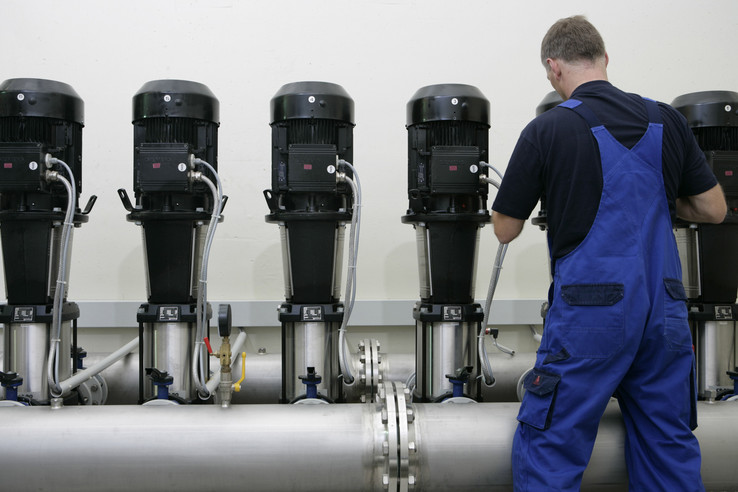
Grundfos pumps deliver the pressure required to supply around 600 million people worldwide with water. The image shows a booster station.
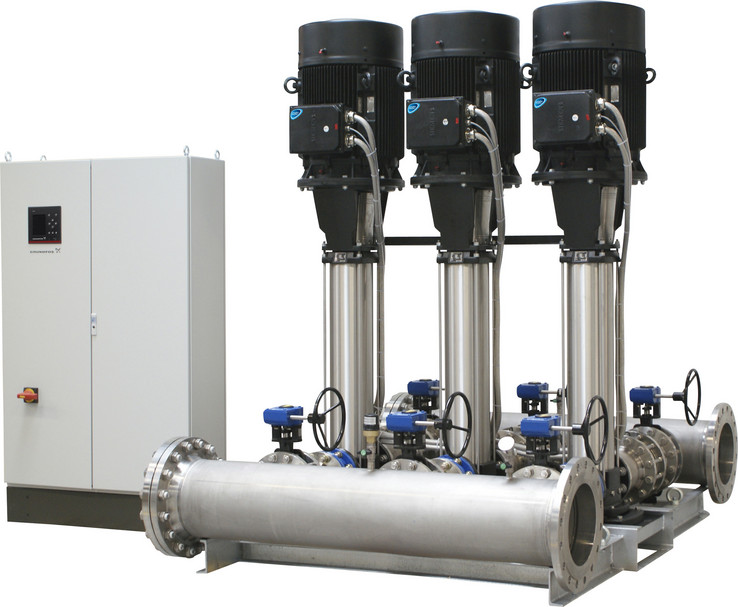
To design booster-station control panels, Grundfos uses a configuration system which functions on the basis of EPLAN Engineering Configuration.
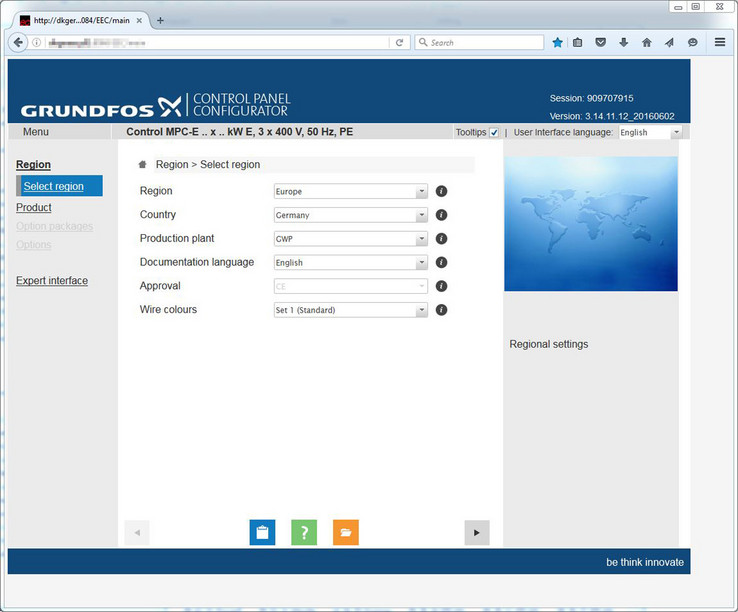
The configuration system, based on EPLAN Engineering Configuration, holds the functional "building blocks" for the equipment to be designed. These can then be selected and automatically connected in a mechatronics design approach.


